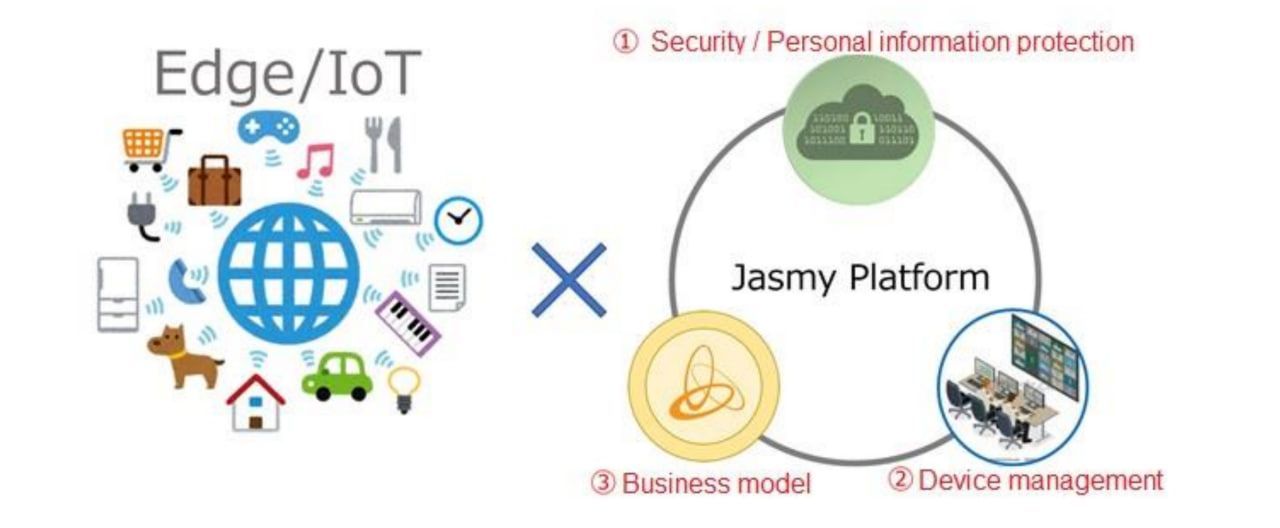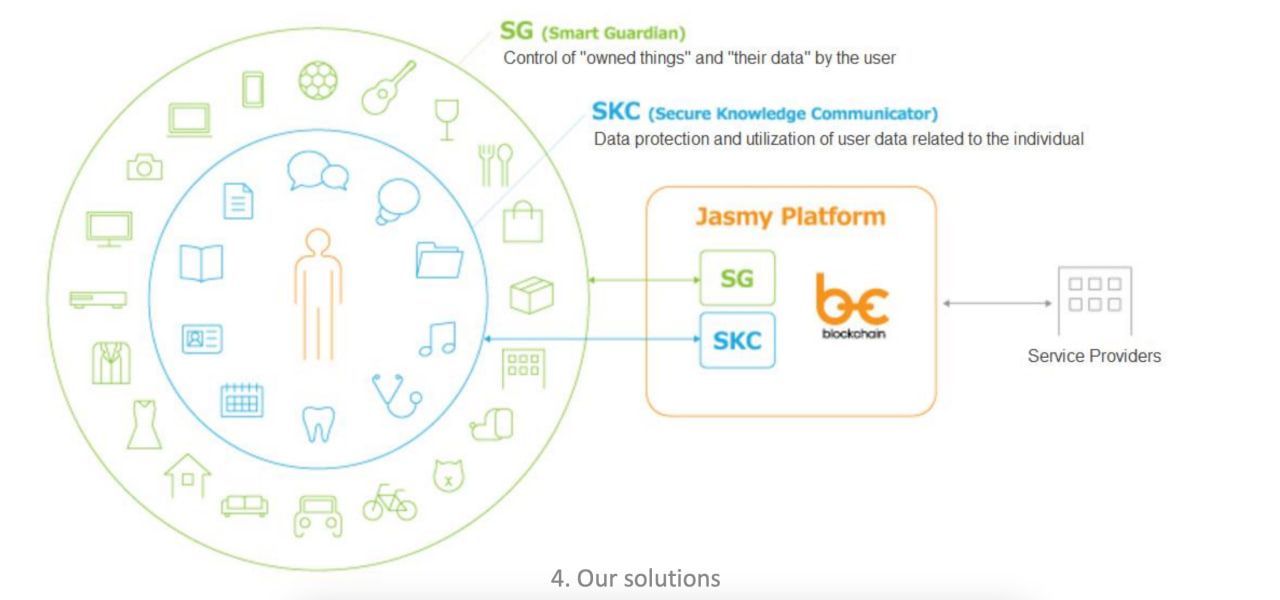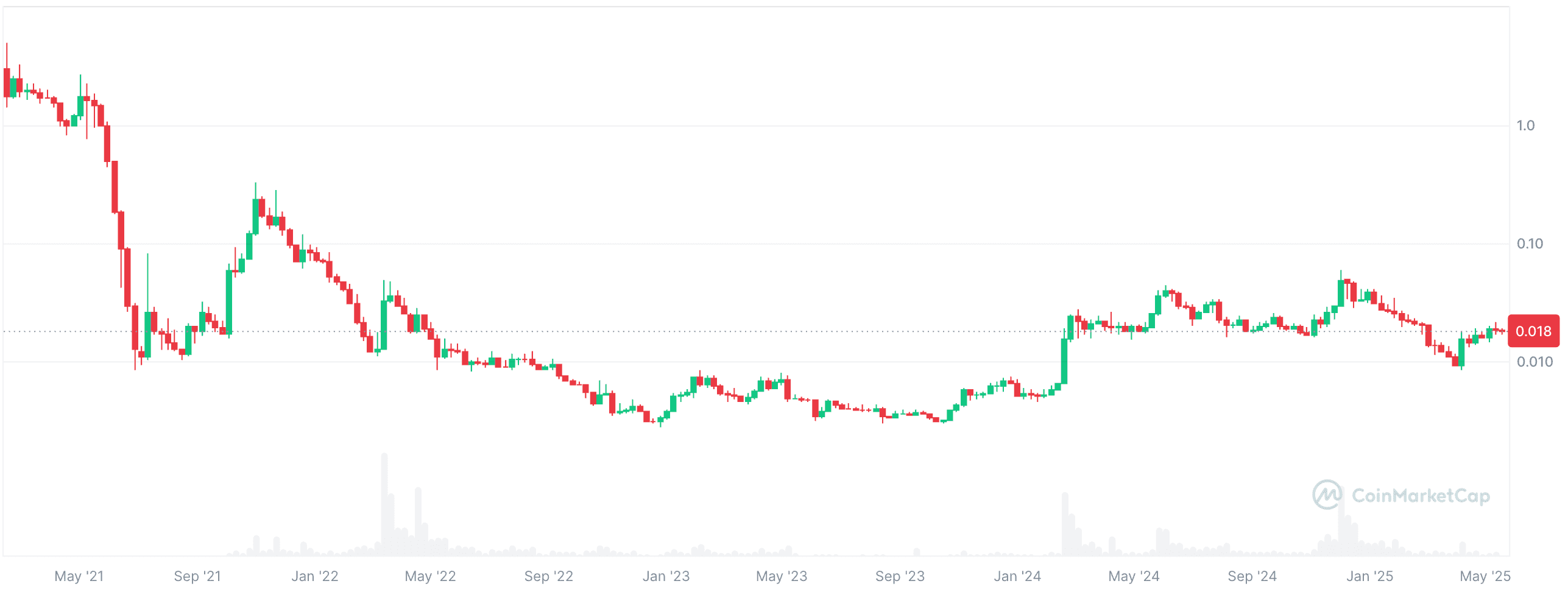
In 2025, JasmyCoin (JASMY) has emerged as one of the most intriguing blockchain projects to watch – a Japan-based cryptocurrency that bridges blockchain and Internet of Things (IoT) technology to empower data sovereignty.
Often dubbed “Japan’s Bitcoin” for being the first cryptocurrency approved for legal trading in Japan, JasmyCoin is pioneering a decentralized data economy where individuals, not corporations, control and monetize their personal data.
The project’s relevance has surged due to its real-world focus: Jasmy’s blockchain platform lets users securely manage data from IoT devices and share it with businesses on their own terms.
This unique focus on data privacy and IoT integration, backed by high-profile partnerships with electronics giants like Panasonic and VAIO, sets JasmyCoin apart in the crypto space.
JasmyCoin is a Japan-based IoT and data privacy project, often called “Japan’s Bitcoin” for its pioneering regulated status. Its platform aims to decentralize data control using blockchain technology, empowering users to own and monetize their personal information.
As we dive deeper, we’ll explore everything you need to know about JasmyCoin in 2025 – from its origins and key features to tokenomics, use cases, market milestones, and future roadmap. By the end, you’ll see why JASMY is gaining attention as a real-world Web3 solution and how you can get involved via platforms like BaltEX.
JasmyCoin is the cryptocurrency token of Jasmy Corporation, a Tokyo-based IoT and blockchain company founded in 2016 by former Sony executives. The founding team includes Kunitake Ando (former President and COO of Sony Corporation) and Kazumasa Sato (former CEO of Sony Style Japan), who brought their tech leadership experience into the blockchain realm.

Their vision was to address one of the digital age’s most pressing challenges: personal data privacy and ownership. In traditional tech models, big corporations collect and monetize user data. Jasmy was created as a response to this – aiming to give control of data back to the people.
At its core, the Jasmy project combines IoT devices with blockchain technology to create a secure, decentralized platform for data exchange. In Jasmy’s ecosystem, users can store their personal information in something called a Personal Data Locker (PDL) – a secure data vault – and then choose if and when to share that data with service providers.
All data transactions are recorded on the blockchain, ensuring transparency and trust. Because Jasmy is built on blockchain (originally as an ERC-20 token on Ethereum), it creates a trustless environment where data can be exchanged between IoT devices and applications without a central middleman.
This approach enables individuals to retain full ownership of their data, a concept Jasmy refers to as “data democracy.” The mission of JasmyCoin is thus to democratize data in the IoT era.
By fusing IoT with distributed ledger technology, Jasmy allows everyday users to securely manage and monetize their personal data. For example, someone using a smart device (say, a fitness tracker or smart car) could allow that device’s data to be shared with a company (for research, analytics, etc.) only if they consent – and in return, they could be paid in JASMY tokens for that data.

This stands in stark contrast to the status quo where user data is often harvested without clear consent. Jasmy’s philosophy aligns with increasing global demand for data sovereignty, where privacy and user consent are paramount.
Notably, JasmyCoin made history by becoming Japan’s first regulated crypto coin, fully compliant with Japanese law. JASMY was officially launched for trading in Japan in October 2021, reflecting close cooperation with regulators to ensure legal transparency and user protection.
This regulatory-first approach has made Jasmy a symbol of trust in Japan’s crypto industry. Since launch, the project has also undergone rigorous security audits (for instance, its smart contracts were audited by blockchain security firm SlowMist) and obtained an ISO/IEC 27001 certification for information security.
All of this underscores that Jasmy is not just another token, but a serious initiative blending enterprise-grade tech and compliance with the ethos of decentralization.
At the heart of Jasmy’s ecosystem is the idea of personal data lockers – secure storage where users hold their own data. Jasmy’s blockchain only keeps hashes or fingerprints of the data, while the actual data is stored off-chain in distributed storage (like IPFS).
This means users maintain custody of their information at all times. The PDL ensures that users, not centralized servers, own and control access to personal data, fulfilling Jasmy’s mission of data sovereignty.
Jasmy is built from the ground up to work with IoT devices – devices like sensors, smart appliances, wearables, etc. The platform supports edge computing, meaning data from IoT devices can be processed locally or at the network edge and then securely shared to the blockchain.

By using decentralized storage tech such as IPFS, Jasmy can handle large volumes of device data without relying on any single centralized database.
Given its focus, Jasmy has strong built-in security features. The Secure Knowledge Communicator (SKC) manages identity verification and data permissioning – companies can only access user data if explicit consent is given. Smart Guardian links user identities with their IoT devices to prevent unauthorized access.
Jasmy’s system complies with data privacy regulations like GDPR, ensuring users have the right to access or revoke their data at any time.
Jasmy provides a ready-to-use IoT platform and development environment for businesses and developers. It uses a “dual chain” approach – Ethereum-based for public transactions and Hyperledger Fabric for private enterprise use – to meet different privacy and performance needs.
Jasmy replaces centralized data handling with a decentralized network. Smart contracts automatically manage data access permissions, and there’s no central entity – not even Jasmy – that owns the data.
This trustless model reduces data breach risk and ensures transparency in every interaction.
JasmyCoin has a fixed maximum supply of 50 billion tokens. Nearly the entire supply is already in circulation, with approximately 49.4 billion JASMY circulating as of early 2025. This means about 98% of the tokens are on the market, and the token does not have a built-in inflation schedule – all tokens were created at inception (the smart contract was deployed on Ethereum in December 2019).
Because the circulating supply is so high, JASMY is a low-priced token per unit (often trading for just a few cents). Since the supply is fixed, any increase in demand could raise the price. However, there are no further token burns or emissions scheduled at this time. The project focuses on utility to drive value rather than artificial scarcity.
At launch, about 48% of the tokens were allocated to an Ecosystem Fund (to incentivize development and partnerships). Another 27% went to investors (likely including early backers and possibly exchange sales), 20% to contributors and the community (which could encompass the team, advisors, and community incentives), and the remaining 5% set aside for an incentives program.
Over time, these tokens have gradually entered circulation (which is why the circulating supply is now ~99% of max). The team’s approach has been transparent, with audits and Japanese financial reporting standards applied.
JASMY is fundamentally a utility token used to facilitate transactions and operations within the Jasmy ecosystem. Its primary use cases include:
Jasmy creates a marketplace where individuals rent out their IoT data to companies. For example, users can let an energy company access smart home consumption data or share driving data with an insurer for personalized rates. Data is shared via smart contracts, and users receive JASMY tokens as compensation.
Jasmy is working with hardware manufacturers to integrate its platform into real devices. Notable is its partnership with VAIO, developing secure PCs and IoT devices using Jasmy’s data protection features. Smartphones and wearables also use Jasmy’s PDL for password-less login and secure authentication.
Jasmy partners with companies like Transcosmos to enhance data security in services. During COVID-19, Jasmy provided secure data exchange for health and contact-tracing data. Jasmy’s use in analytics and IT shows it’s more than a crypto token – it’s a platform for compliant, trusted data management.
In March 2024, Jasmy and Panasonic announced co-development of a Web3 platform connecting personal and IoT data. This includes using Jasmy’s PDL in Panasonic’s devices for secure, consent-based data sharing. The collaboration boosts Jasmy’s relevance in smart home systems and electronics.
Jasmy’s roadmap includes smart city partnerships where urban sensor data and citizen data can be shared securely. This could revolutionize public services while protecting individual privacy.
Partnering with Sagan Tosu, a J1 League soccer team, Jasmy has launched fan tokens and exclusive content platforms. Fans use JASMY to purchase merchandise and interact with the team, while teams gain insights via consensual data sharing.
Jasmy is expanding globally with help from DWF Labs. Major exchange listings on Coinbase, Binance, and more have enhanced JASMY’s accessibility and liquidity. BaltEX.io supports JASMY trading via cross-chain swaps.
JasmyCoin’s smart contract was deployed in December 2019. The token gained visibility after its October 2021 listing on Coinbase. Early low supply led to a brief $4.99 spike, but more realistic highs were around $0.20 during the 2021 bull run.
2022 was tough, with JASMY falling to as low as $0.0027 due to market conditions and increased circulating supply. Despite the price decline, Jasmy continued developing and partnering with enterprises.

2023 saw JASMY bottom out and begin recovering. By late 2024, it peaked at $0.0585, reflecting strong fundamentals and interest in its 2025 roadmap. The price closed 2024 at around $0.03.
In early 2025, after some correction, JASMY trades in the $0.016–$0.018 range. The market cap hovers around $800 million. While the unit price is low, market cap reflects solid demand and adoption.
Jasmy will launch its proprietary blockchain, JANCTION, in Q2 2025. This will reduce reliance on Ethereum and improve performance for IoT data exchange. It includes support for 20,000 nodes and 30 validators.
Jasmy is introducing its own decentralized exchange. This will allow trading of JASMY and other ecosystem tokens, support liquidity pools, and enable DeFi tools like yield farming.
In 2025, staking and node programs will begin. Users will earn JASMY rewards for running validators or delegating tokens. Node purchases with JASMY are planned, boosting decentralization.
A Developer Program will provide tools and funding to build dApps on Jasmy. A Jasmy App Platform Alpha will debut in Q2, featuring products like insurance and resume apps powered by secure data sharing.
Jasmy will expand partnerships with local governments, sports teams, banks, and listed companies. These collaborations aim to boost ecosystem activity and integrate JASMY in more real-world payments and services.
Jasmy will improve multilingual support, user onboarding, and mobile apps. International growth is a key priority with initiatives underway in Southeast Asia and Europe.
As Web3 evolves, Jasmy’s emphasis on personal data control could position it as the go-to platform for data vaults, especially in regions with privacy regulations like GDPR.
With billions of devices coming online, Jasmy’s decentralized model may serve as a core infrastructure for IoT. Its system enables citizens and cities to share data securely while monetizing it.
Jasmy’s regulatory compliance and big-name partnerships (e.g., Panasonic) make it more enterprise-friendly than competitors like IOTA or Ocean Protocol.
The future depends on third-party development. Jasmy’s efforts to support developers and dApps will determine its evolution into a platform versus just a token.
If Jasmy succeeds, JASMY could become the default currency of a decentralized data economy, embedded into daily life through devices, smart homes, cities, and apps.
JasmyCoin stands out by offering a real-world blockchain use case: secure, user-controlled data sharing in the age of IoT. With a focus on privacy, compliance, and practical integrations, it has grown into a robust platform supported by corporate and government partnerships.
The 2025 roadmap introduces staking, DEX functionality, and its own blockchain, positioning JASMY as more than a token – it’s the foundation of a decentralized data economy.
As the world moves toward data sovereignty and smart connectivity, Jasmy is poised to play a key role. JASMY is already available on major exchanges and is easy to trade on BaltEX.io – the fast, secure platform for swapping crypto across chains.
Ready to be part of the data revolution? Trade JASMY today and help build a future where you control your information – and get rewarded for it.
Keywords: JasmyCoin 2025, JASMY token, Jasmy blockchain, JasmyCoin price prediction, how to buy JASMY, Jasmy staking, IoT blockchain platform, Personal Data Locker, data sovereignty crypto, Jasmy partnerships, Jasmy vs IOTA, secure data exchange, decentralized IoT, Jasmy smart contracts, JASMY rewards, Jasmy DeFi roadmap, tokenized data marketplace, best JASMY wallet, Jasmy roadmap 2025, smart city blockchain, blockchain for privacy, stablecoins on Jasmy, Jasmy BaltEX, cross-chain crypto swaps, low-fee crypto trading, crypto exchange for JASMY, best altcoin platforms, secure crypto wallet, Web3 data ownership, JASMY utility token, digital identity blockchain, crypto tokenomics, Jasmy validator nodes, proof of data ownership, staking for JASMY, Jasmy DEX, secure IoT data sharing, crypto rewards system, blockchain for sustainability, privacy-focused crypto, Jasmy NFTs, data monetization crypto, secure Web3 transactions, GDPR blockchain compliance, global crypto use cases, tokenized IoT economy, decentralized identity, smart home blockchain, decentralized app platform, data-driven crypto, transparent blockchain economy, personal data monetization, IoT crypto wallet, on-chain governance, Jasmy ecosystem 2025.